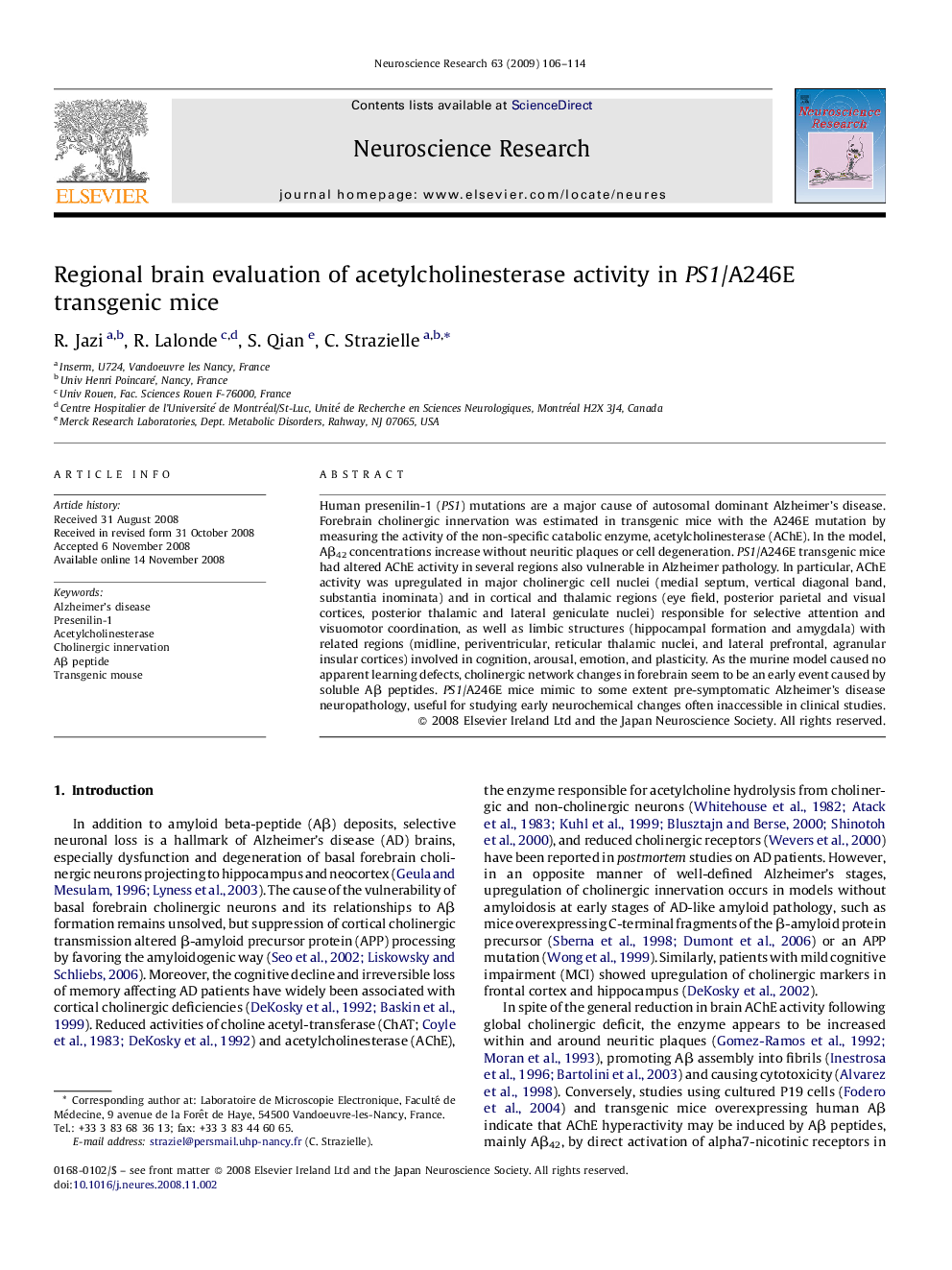| کد مقاله | کد نشریه | سال انتشار | مقاله انگلیسی | نسخه تمام متن |
|---|---|---|---|---|
| 4351713 | 1298078 | 2009 | 9 صفحه PDF | دانلود رایگان |

Human presenilin-1 (PS1) mutations are a major cause of autosomal dominant Alzheimer's disease. Forebrain cholinergic innervation was estimated in transgenic mice with the A246E mutation by measuring the activity of the non-specific catabolic enzyme, acetylcholinesterase (AChE). In the model, Aβ42 concentrations increase without neuritic plaques or cell degeneration. PS1/A246E transgenic mice had altered AChE activity in several regions also vulnerable in Alzheimer pathology. In particular, AChE activity was upregulated in major cholinergic cell nuclei (medial septum, vertical diagonal band, substantia inominata) and in cortical and thalamic regions (eye field, posterior parietal and visual cortices, posterior thalamic and lateral geniculate nuclei) responsible for selective attention and visuomotor coordination, as well as limbic structures (hippocampal formation and amygdala) with related regions (midline, periventricular, reticular thalamic nuclei, and lateral prefrontal, agranular insular cortices) involved in cognition, arousal, emotion, and plasticity. As the murine model caused no apparent learning defects, cholinergic network changes in forebrain seem to be an early event caused by soluble Aβ peptides. PS1/A246E mice mimic to some extent pre-symptomatic Alzheimer's disease neuropathology, useful for studying early neurochemical changes often inaccessible in clinical studies.
Journal: Neuroscience Research - Volume 63, Issue 2, February 2009, Pages 106–114